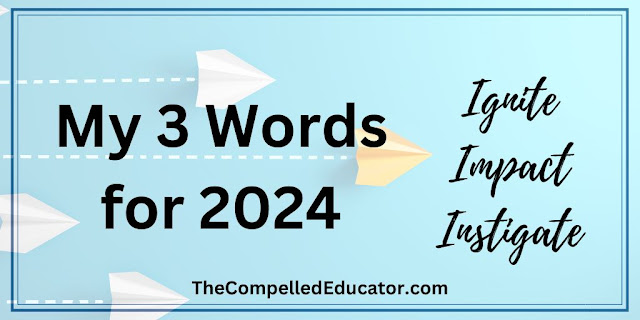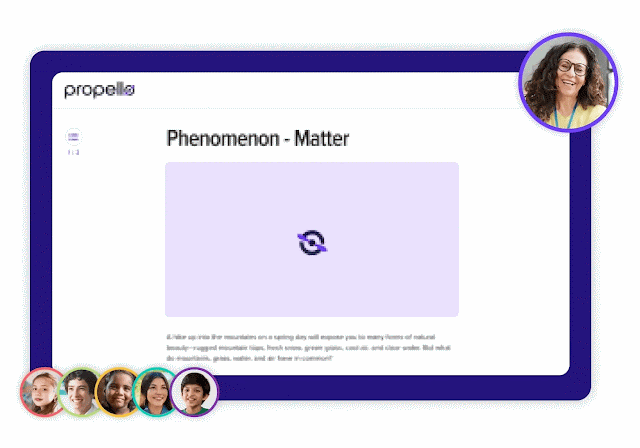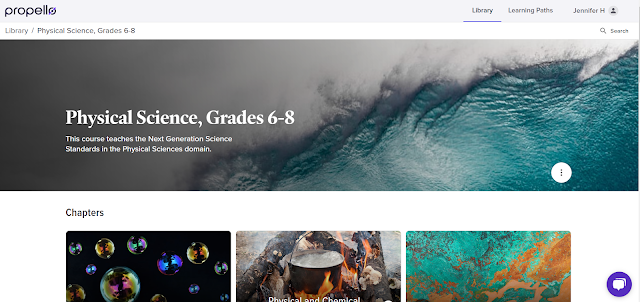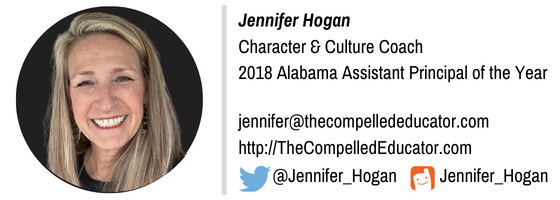My life’s mission has always been to empower others in their journey to becoming the best version of themselves, whether I was a teammate, coach, personal trainer, science teacher, high school administrator, or character coach.
One of the key reasons I started The Compelled Educator long ago was to create a space where I could share resources, ideas, and successful practices with others.
When I was a science teacher, my ultimate goal was to inspire creativity and curiosity in my students. I wanted them to walk away with a love for science!
I used inquiry-based lessons as much as possible, because I knew that there would also be times when direct instruction would be necessary to help students “connect the dots” when it came to clarifying myths about science and explaining scientific concepts.
I was always looking for lessons that were inquiry-based, aligned with standards, and taught my students to ask questions and investigate problems. Before the Internet came along, it was difficult to find resources to add to my teacher toolbox. This is one reason I’m thrilled to share Propello with you today!
This post is sponsored by Propello. All opinions are my own.
I discovered Propello at the 2023 ASCD Conference in Colorado. Propello is a FREE high-quality learning platform created by teachers, for teachers, and it’s evident when you visit the site that this platform is bold, innovative, and thoughtful in how it was created with the user in mind.
Mission and Values
Propello has the potential to take a traditional classroom to a learning hub, and I believe it’s because of their mission and values that drive their work.
From the Propello website:
Learning for Everyone
We believe education is a right, not a privilege. By designing individualized learning solutions for every student, we are striving towards a more equitable future of education.
Spark Joy
Our goal is to create delight in every discovery. Designed to cultivate curiosity and inspire a lifelong love of learning in educators and students alike, our immersive curriculum helps knowledge take flight.
Challenge Convention
We're not afraid to break the mold. We see difficult conversations as opportunities to explore our potential, pushing us to create solutions that propel education upward.
Here are 5 reasons to use Propello:
1. Quality
The curriculum is aligned to Next Generation Science Standards (NGSS). The NGSS were created by states to improve science education for all K-12 students. Each state has its own unique standards, and Propello has reviewed the standards in each state to determine how the platform meets or supplements each state. Access to quality online learning helps every learner, no matter their zip code, to reach their full potential.
2. Doing Science
Students can’t just learn ABOUT science, they need to DO science. Each of Propello’s units contain hands-on activities for students to learn concepts by investigating, reporting, and analyzing. Materials lists, instructions, and Teacher Tips are included for each activity to assist the teacher in managing the activities. (The Teacher Tips are great for brand new teachers! Did you just hire new science teachers? Share this platform with them!)
3. Customized delivery
Within the curriculum, Learning Paths can be created for students based on teacher choice. It can be created for an entire district, a single class, a specific group of students, or an individual student. (Think about sub days, students who miss class for several days, students in ISS, or student groups based on readiness!) After teaching Physical Science at the high school level for over 10 years, I knew the concepts that needed to be reinforced at the middle school level. Propello is an excellent resource for customized, vertical alignment between grade levels.
4. Personalization
Propello has embedded supports that include translations to 100+ languages, read aloud, a visual dictionary, text isolation, and more. By using Propello, the lessons become “rewindable,” and students are able to spend the time they need on the content. Additionally, using the online content allows students to read and work at their own pace, freeing up time for a teacher to hold individual student conferences while everyone else is working.
5. Save time
Teachers already have too much on their plates, and trying to comb through the vast number of online resources can be daunting and time consuming. Propello's teacher- and expert-created curriculum with built-in labs, activities, exercises, and teacher support saves so much time. Also, Propello easily integrates into Google Classroom and Microsoft Teams. Having Propello as a resource cuts down on preparation time, saving teachers loads of time spent at home and on the weekends getting ready for a lesson!
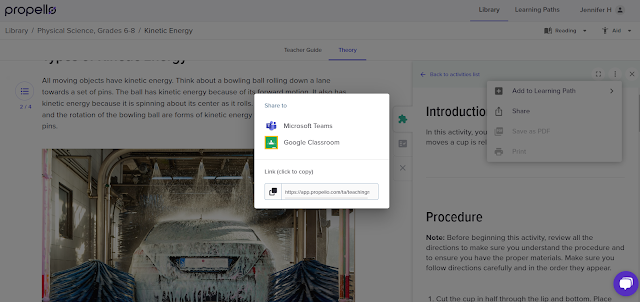
Differentiation and Extension
The four questions for Professional Learning Communities are
1) What do we want students to know and be able to do?
2) How will we know if they learn it?
3) What will we do when they haven’t learned it?
4) How will we extend the learning when they already know it?
Many PLCs spend their time working through the first 3 questions and give little amount of attention to the 4th question. Propello assists teachers and PLCs in answering the critical fourth question.
For many of the activities on the platform, Propello provides differentiation for students who need extra support as well as extensions for advanced learners.
Each unit also contains formative assessments throughout the reading assignments. This is helpful to the teacher to determine the level of readiness and comprehension of each student.
Resources and Responsive Support
As I was navigating through Propello and wishing that this resource had been available when I was a classroom teacher, I found that I had a question that needed answering. It gave me the perfect opportunity to use the chat feature on the platform. Within an hour of asking my question about assigning Learning Paths to students and/or groups, I had a response from a team member. She also shared a link to another resource that she thought I may find helpful. The next day, I received a copy of the transcript from our chat via email!
At Propello, you can find many teacher resources including articles and books about grading, standards, ChatGPT, science, and more. It truly is a space for student AND teacher learning!Propello is in its early stages with plans to launch more subjects soon (English Language Arts in the fall of 2023). If you are or know a middle school science teacher, please share Propello with them!
Pin now, share later >>

